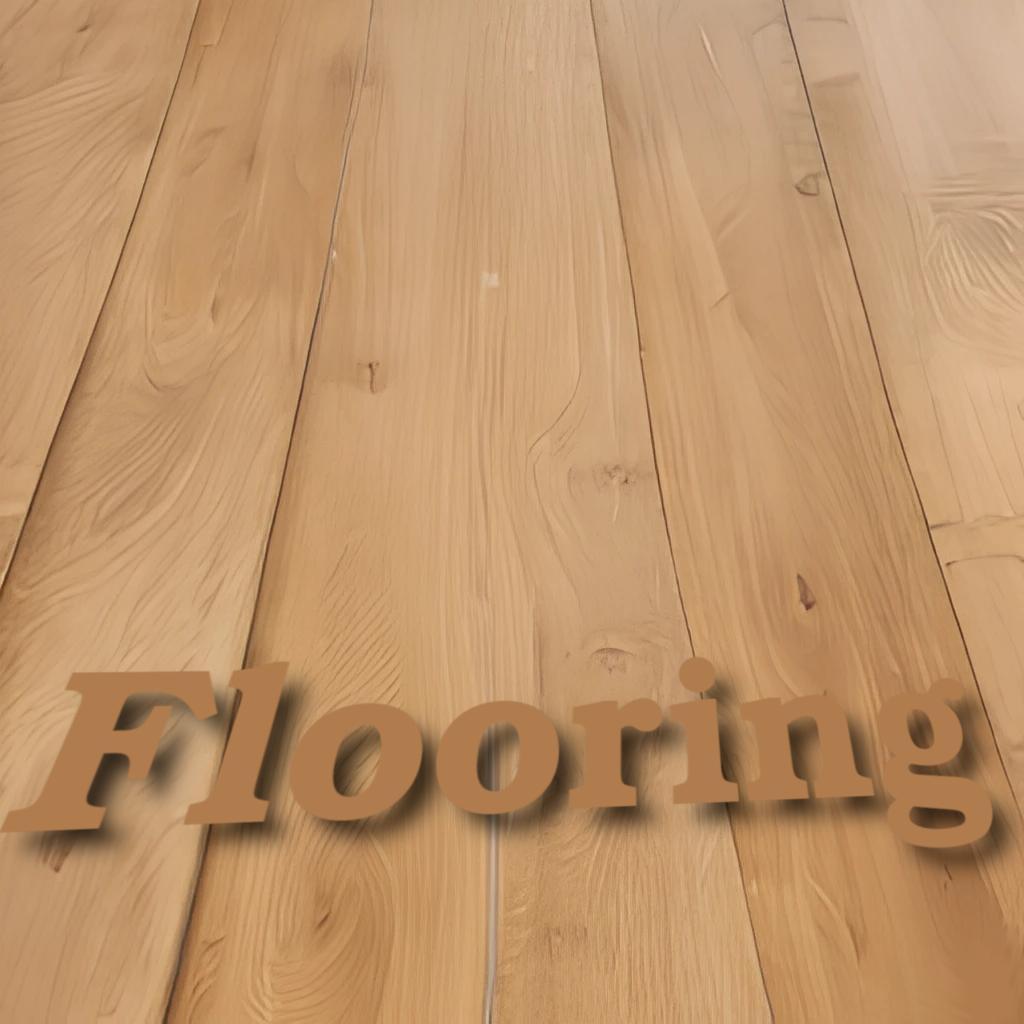


In the realm of interior design, the floor is more than just a foundation; it's a canvas waiting to be adorned with creativity, comfort, and functionality. The world of flooring is a captivating journey through textures, patterns, and materials that shape the character of a space. From the timeless elegance of hardwood to the sleek modernity of tiles, flooring is a statement, an art form, and a reflection of the way we live. Let's step into the diverse landscape of flooring, exploring the craftsmanship and innovation that lie beneath our feet.
Hardwood Elegance: Timeless Charm, Enduring Beauty
Hardwood flooring is a classic, an enduring symbol of sophistication that has graced homes for centuries. Beyond its timeless charm, hardwood floors carry a sense of warmth and character. Each plank tells a story, bearing the unique grains and knots that nature weaves into its tapestry. From the rich hues of oak to the exotic allure of teak, hardwood flooring is a testament to craftsmanship and nature's artistry.
Tiles: A Mosaic of Possibilities
Tiles are the chameleons of flooring, offering an endless mosaic of possibilities. Ceramic, porcelain, or natural stone tiles come in an array of shapes, sizes, and patterns, allowing for creative expression in every room. Whether adorning a kitchen with intricate mosaic backsplashes, or creating a spa-like atmosphere with large-format tiles in a bathroom, tiles bring versatility and visual intrigue to interior spaces.
Carpet Comfort: Luxurious Underfoot Elegance
Carpeting transforms floors into luxurious landscapes of comfort and style. Beyond its tactile appeal, carpets add warmth, absorb sound, and introduce a world of patterns and colors. From plush, shaggy textures that invite barefoot indulgence to sleek, low-pile carpets that define modern spaces, the art of carpeting lies in its ability to create cozy sanctuaries beneath our feet.
Laminate and Vinyl: Affordable Innovations with Aesthetic Flair
Laminate and vinyl flooring are the unsung heroes of affordability and versatility. Innovations in technology have elevated these materials to mimic the look and feel of natural wood, stone, or ceramic, offering cost-effective options for homeowners. The wide array of styles and easy installation make laminate and vinyl flooring a practical choice without compromising on aesthetic flair.
Eco-Friendly Surfaces: Sustainability Beneath Your Toes
In an era of environmental consciousness, eco-friendly flooring options have taken center stage. Bamboo, cork, and reclaimed wood offer sustainable alternatives to traditional materials. These flooring options not only showcase natural beauty but also align with the principles of responsible living, turning floors into eco-conscious statements.
Concrete Chic: Industrial Aesthetics in Modern Flooring
Concrete flooring has evolved from its industrial roots to become a chic and contemporary choice for modern interiors. Polished concrete floors embrace an urban aesthetic, providing a sleek backdrop for minimalist designs. Stained and stamped concrete add artistic elements, turning floors into canvases for personal expression.
Radiant Heating: Warming the Floors and Hearts
Beyond aesthetics, flooring has embraced technological innovation with radiant heating systems. Underfloor heating, whether through electric mats or hydronic systems, transforms floors into warm and inviting spaces, especially in colder climates. Radiant heating is not just a luxury; it's a practical and efficient way to enhance the comfort of living spaces.
Custom Inlays and Patterns: Flooring as Artistic Expression
Flooring has transcended its utilitarian role to become a canvas for artistic expression. Custom inlays and intricate patterns, whether created with different wood species, tiles, or carpets, turn floors into personalized masterpieces. From geometric shapes to intricate motifs, these artistic expressions on floors add a touch of individuality and elevate the overall design aesthetic.
In recent years, there have been several significant innovations in flooring development. Here are a few examples:
Luxury Vinyl Tile (LVT): LVT is a type of vinyl flooring that is designed to mimic the look of natural materials such as wood or stone. LVT has become increasingly popular due to its durability, low maintenance, and affordability.
Waterproof flooring: Advances in technology have allowed for the development of waterproof flooring options, such as luxury vinyl plank (LVP) and ceramic tile. These types of flooring are ideal for high-moisture areas like bathrooms and kitchens.
Engineered hardwood: Engineered hardwood is a type of flooring that is made from layers of wood and composite materials. It is more stable and less prone to warping and cracking than traditional hardwood, making it a popular choice for high-traffic areas.
Eco-friendly flooring: There has been a growing demand for eco-friendly flooring options in recent years. Options such as bamboo, cork, and recycled materials are becoming more popular due to their sustainability and durability.
Smart flooring: Advancements in technology have also allowed for the development of smart flooring options, such as floor sensors that can detect changes in pressure and temperature. This technology has potential applications in the healthcare and security industries.
Floors and flooring works are essential components of any building. They provide a foundation for the structure and help to create a comfortable and functional space. Here are a few reasons why floors and flooring works are important in the building:
Durability and longevity: A properly installed floor can last for many years, even decades, with minimal maintenance. This makes it a cost-effective investment in the long run.
Aesthetics: Flooring can significantly impact the overall appearance and style of a room or building. Different types of flooring materials and designs can create different looks, from modern and sleek to classic and traditional.
Safety: The type of flooring used can impact the safety of a building. Slip-resistant flooring is important in areas such as bathrooms and kitchens where moisture can create a hazard.
Noise reduction: Flooring can help to reduce noise levels in a building. Certain types of flooring, such as carpet or acoustic flooring, can absorb sound and reduce echoes and vibrations.
Energy efficiency: Flooring can contribute to the overall energy efficiency of a building. Some types of flooring materials, such as cork or bamboo, have natural insulating properties that can help to keep a space warm in the winter and cool in the summer.
Flooring services can include a variety of aspects related to the installation, repair, and maintenance of floors. Some of the main aspects of flooring services include:
Flooring installation: This involves the installation of various types of flooring materials such as hardwood, laminate, tile, vinyl, carpet, and others.
Flooring repair: This involves repairing any damage to existing floors such as scratches, dents, or cracks.
Flooring maintenance: This involves regular cleaning and maintenance of floors to keep them in good condition and extend their lifespan.
Floor sanding and refinishing: This involves sanding down old floors to remove scratches and blemishes, and then refinishing them to give them a fresh look.
Floor sealing and waterproofing: This involves the application of sealants and waterproofing agents to protect floors from moisture and other types of damage.
Floor leveling: This involves the process of leveling uneven or sloping floors to make them more even and safe.
Flooring removal and disposal: This involves the removal and disposal of old or damaged flooring materials.
These are some of the main aspects of flooring services, but the specific services offered may vary depending on the company or contractor providing the services.
The best floor surfaces can vary depending on the specific needs and preferences of the homeowner or business owner. However, here are some popular options:
Hardwood flooring: This classic flooring option is durable, long-lasting, and adds warmth and character to any space.
Laminate flooring: Laminate is a cost-effective alternative to hardwood flooring that offers a similar look and feel.
Vinyl flooring: Vinyl is a versatile and affordable flooring option that is durable and easy to clean.
Tile flooring: Tile is a popular choice for bathrooms and kitchens due to its resistance to water and moisture.
Carpet flooring: Carpet is a comfortable and soft flooring option that can add warmth and insulation to a space.
Concrete flooring: Concrete is a durable and low-maintenance flooring option that is becoming increasingly popular in modern design.
Ultimately, the best floor surface for a specific space will depend on factors such as the function of the room, the amount of traffic it will receive, and the overall style and design aesthetic.
The best floor heating system depends on various factors, such as the type of flooring, the size of the room, and personal preferences. However, some of the most popular floor heating systems include:
Electric radiant heating: This type of system uses electric heating elements installed under the floor. It is ideal for small spaces and can be installed under most types of flooring.
Hydronic radiant heating: This system uses heated water that circulates through tubes installed under the floor. It is more expensive to install but can be more energy-efficient and ideal for larger spaces.
Air-heated radiant floors: This system circulates warm air through vents installed under the floor. It is less common but can be ideal for spaces with high ceilings.
When selecting a floor heating system, it is important to consider factors such as installation costs, energy efficiency, and maintenance requirements. It is also important to work with a professional to ensure that the system is installed properly and safely.
The world beneath our feet is a dynamic tapestry of textures, colors, and materials that reflect the diversity of design. Flooring is not just about practicality; it's an art form that shapes the character of a space. From the understated elegance of hardwood to the bold statements made by tiles and carpets, the choices in flooring are as varied as the tastes and lifestyles they cater to. So, as you walk through a space, remember that beneath your feet lies not just a floor but a story—a narrative of craftsmanship, innovation, and the ever-evolving art of interior design.
Warm regards,
We use cookies
We use cookies and other tracking technologies to improve your browsing experience on our website, to show you personalized content and targeted ads, to analyze our website traffic, and to understand where our visitors are coming from. Privacy Policy.